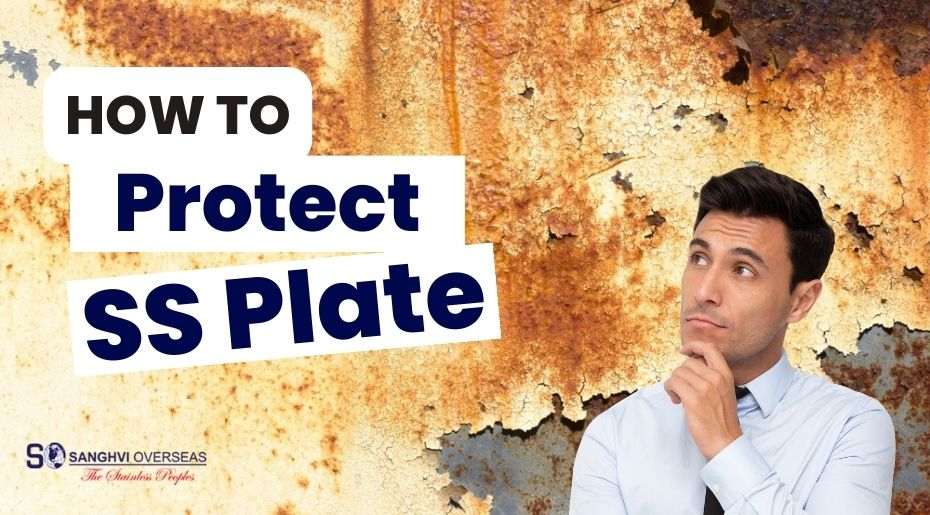Are you looking for a way to protect your stainless steel plate from corrosion? If so, then this blog post is just what you need! Corrosion and weathering can take their toll on any metal surface over time, leaving it dull and corroded, creating further damage. But with the right approach and strategies, corrosion (and other oxidation forms) don’t have to be inevitable – they can even be prevented altogether. In this comprehensive blog post, we’ll provide clear-cut guidance on how to best protect your stainless steel 304 plate, including detailed tips on preventive care and effective maintenance techniques in case there is already existing damage. We’ll break down the many steps and measures required to keep your beautiful stainless steel 304 plates safely shielded against whatever Mother Nature throws at them!
What is a Stainless Steel 304 Plate?
Stainless Steel 304 Plate is a rolled product that combines stainless steel’s strength and corrosion resistance with the formability of cold-formed steel. It is an alloy made from chromium, nickel, and molybdenum, which provides excellent mechanical properties such as strength and flexibility. Adding molybdenum helps prevent pitting and crevice corrosion in environments containing chlorides or other hostile agents. Additionally, it features high-temperature scaling resistance for applications up to 1400°F (760°C). Its exceptional heat-resistant properties are great for machinery components like turbocharger parts, housings, exhaust systems, and grills.
How to Protect Stainless Steel 304 Plate
Keep the Surface Clean:
The most basic way to prevent corrosion and weathering in stainless steel 304 plates is to keep their surface clean and free from contaminants that can cause rust and wear and tear. Regular cleaning with a soft-bristled brush, mild soap, and water can help remove dirt, grime, and other debris that can scratch or damage the surface of the plates. You can also use specialized cleaning products specifically formulated for stainless steel surfaces to remove stains and fingerprints.
Apply Protective Coatings:
Another effective way to protect stainless steel 304 plates from corrosion and weathering is to apply protective coatings as a barrier between the metal and the environment. Various types of protective coatings available in the market can provide long-term protection against rust, moisture, UV rays, and other environmental factors. Epoxy, polyurethane, and acrylic coatings are some of the most commonly used coatings for stainless steel surfaces that offer excellent resistance to abrasion, chemicals, and impact.
Use Corrosion Inhibitors:
Corrosion inhibitors are chemical compounds that can slow down or prevent rust formation on metal surfaces, including stainless steel 304 plates. These inhibitors work by forming a protective layer on the surface of the metal that blocks the corrosive agents from reaching the underlying layer. There are various types of corrosion inhibitors available in the market, such as rust converters, rust preventatives, and water-based inhibitors, that you can use to protect your stainless steel 304 plates from corrosion and weathering.
Consider Proper Storage:
Proper storage is also important to protecting ss 304 plates from corrosion and weathering. When not in use, storing the plates in a dry and well-ventilated area where they are not exposed to high humidity or extreme temperature changes is important. You can also use protective covers or wrap the plates in a plastic film to shield them from the moisture in the air. Moreover, storing the plates in an upright position can prevent the accumulation of water or debris on their surface that can lead to corrosion or pitting.
Maintain Proper Drainage:
If you use stainless steel 304 plates in outdoor settings or applications that involve contact with liquids, it is important to ensure proper drainage to prevent standing water or moisture accumulation on the surface. Standing water can trap environmental contaminants and promote rust formation on the surface of the plates, leading to corrosion and weathering. Therefore, ensure the plates are installed with proper drainage systems or slopes that allow water to run off and prevent stagnation.
Conclusion:
Stainless steel 304 plates are a popular choice in various industries due to their excellent properties, but they require proper maintenance and protection to maintain their longevity and durability. By following the tips above, you can effectively protect your stainless steel 304 plates from corrosion and weathering and ensure they continue to perform optimally in their intended applications. Remember that prevention is always better than cure for metal corrosion, so invest in the right protective measures and regularly inspect your plates to keep them in top condition.







